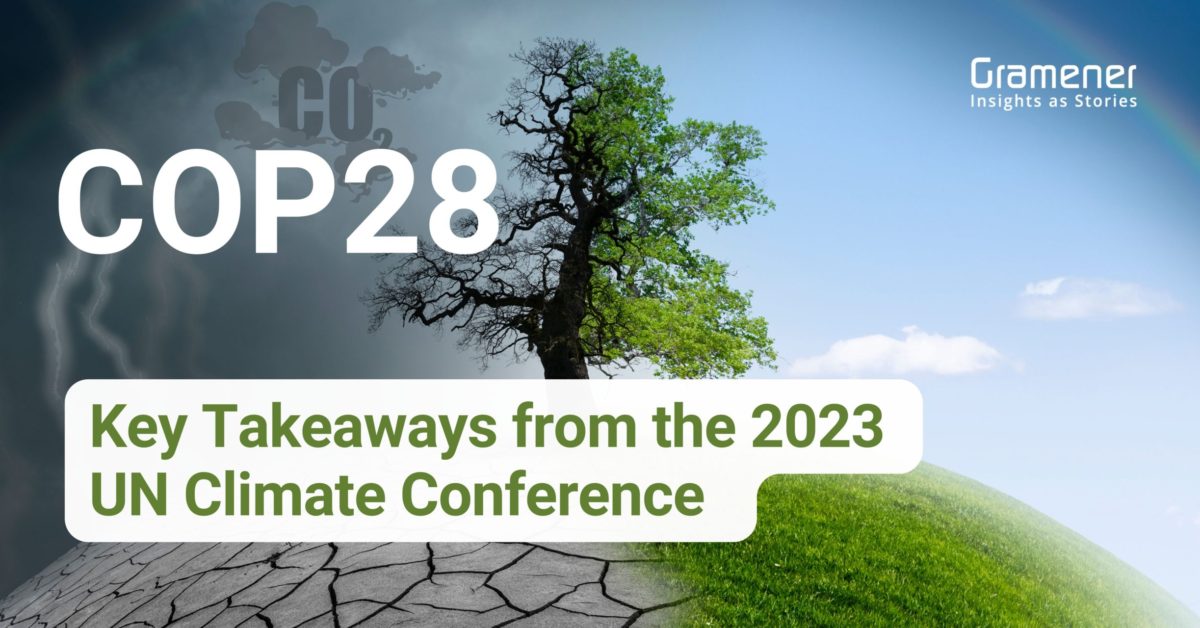Between November 30 and December 12, delegates from nearly 200 countries gathered to coordinate global climate action for the coming year at an event known as COP28. If you’re unfamiliar with COP28 or need a quick overview, this short article will outline the key takeaways from the event.
COP28 is short for the 28th Conference of the Parties to the United Nations Framework Convention on Climate Change, often referred to as COP or the UN Climate Change Convention.
During the yearly COP, representatives from almost every country worldwide negotiate to establish global objectives for addressing climate change. They present their respective countries’ plans to contribute to these goals and report on progress.
Key Facts About Climate
- 1.5° C: The target is to limit global warming to decrease the adverse effects of climate change.
- 1/3: The quantity of emission reductions we could bring by protecting nature.
- <10%: The amount of climate funding presently assigned to nature-based solutions.
Why Is COP28 Important?
The world is grappling with unprecedented impacts from a warming planet, evidenced by record-breaking wildfires, catastrophic floods, and intolerable heat waves.
Adding to the concern, the inaugural report card on our climate progress, aptly named the Global Stocktake, starkly illustrates how far we lag behind our climate ambitions.
Urgent and dramatic actions are imperative to benefit our climate, and the time for such measures is now. COP28 presents a global opportunity to elevate our efforts.
The annual climate COP convenes in a different city yearly to underscore the significance of collaboration among nations worldwide.
The recent gathering, from November 30 to December 12 in Dubai, United Arab Emirates (UAE), aimed at fostering increased global cooperation to combat climate change.
While the overall goal remains consistent across these meetings, specific topics can vary annually. As was the case last year, the host country plays a pivotal role in setting the tone and initiating the direction of discussions.
What Were The Four Key Areas COP28 Focused On?
Transitioning to Clean Energy
Accelerating the transition to cleaner energy and significantly reducing emissions by 2030 to restrict global warming to 1.5°C (2.7°F) above pre-industrial levels.
Centering nature, people’s lives & livelihoods
Place nature, individuals, lives, and livelihoods at the core of climate action, including aiding the most vulnerable communities in adapting to the changes that are already underway.
Delivering on finance
Fulfill past commitments and establish the groundwork for a new financial agreement. Climate finance should be both affordable and accessible, ensuring its availability to developing countries.
Mobilizing inclusivity
Activate the most comprehensive COP to date, guaranteeing that decisions, discussions, and the implementation of solutions are genuinely inclusive and conducted collaboratively with Indigenous Peoples and local communities.
What Can We Do To Help Address Climate Change?
Every action holds significance—each bit of carbon, every fraction of a degree, and everyday matters. The actions taken by our leaders in addressing climate concerns matter, and so do your contributions to climate action.
As a global society, we must:
- Transition away from fossil fuels: It is imperative to expedite the fair elimination of fossil fuels, striving for net-zero emissions by 2050 or earlier.
- Foster climate-resilient societies: Empowering communities that safeguard nature is crucial in securing their homes, livelihoods, and future well-being.
- Commit to climate solutions: We must encourage pledges and investments in projects, policies, and practices that positively impact nature and the climate.
Looking for data-driven sustainable solutions? Book a discovery call.
